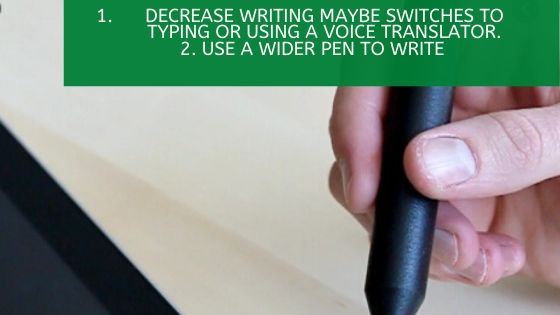Conservative management for writer’s dystonia
- Decrease writing maybe switches to typing or using a voice translator.
- Use a wider pen to write
Medical management for writer’s dystonia
- Use of drugs such as Trihexyphenidyl, Tetrabenazine, and Benztropine
- Botulinum toxin for the affected hand, symptomatic, and short term treatment.
- Transcutaneous electrical nerve stimulation
Surgical management for writer’s dystonia
Surgery can be very promising and rewarding. Two types of surgeries can be done using stereotactic techniques.
- Thalamotomy
- Deep brain stimulation of globus pallidus internal (GPi) nucleus
Thalamotomy
This is the most common surgical procedure that is performed at our Institute. Thalamotomy involves making a small lesion in the ventro anterior part of the thalamus.
This is performed using the stereotactic technique. It is a very short procedure performed under stereotactic conditions and the improvement from the procedure is visualized right on the operation table itself.
The patient is assessed by the team of doctors before undergoing surgery for the various dystonia scales that have been described above.
Video recording of his disability is done to understand the exact amount of disability. Following this, he is taken to the Operation Theatre wherein through a small hole brain on the skull of the head an electrode is passed and the area of the cells which are responsible for dystonia is stimulated.
When these cells are stimulated the patient finds instantaneous improvement in the dystonia on the operation table. For example, a musician who is not able to play the drum can comfortably start playing the drum (referred to the video attached) https://youtu.be/oWVTuXn7qTs a person who cannot write can start writing comfortably.
Once we have confirmed the level of improvement that is required we then make a permanent lesion in the brain bypassing a little higher level of current and increasing the temperature of the tip of the probe in order to destroy a few groups of cells which are responsible for dystonia.
As the surgery is done under the fully awake condition the chances of any collateral damage bar side effects or complications are very minimal. The improvement from the surgery is instantaneous.
The patient is observed for a couple of days in the hospital and repeats scoring and video recordings are done. Following this, the patient is discharged and followed up only once after 6 months to assess if there is any change in the outcome that was seen after the surgery.
One of the second largest experiences of performing this surgery in the world. However, results have been widely appreciated by the international Scientific Community. We have also published our results in prestigious journals like Movement Disorders Clinical Practice and Annals of Indian Academy of Neurology.




